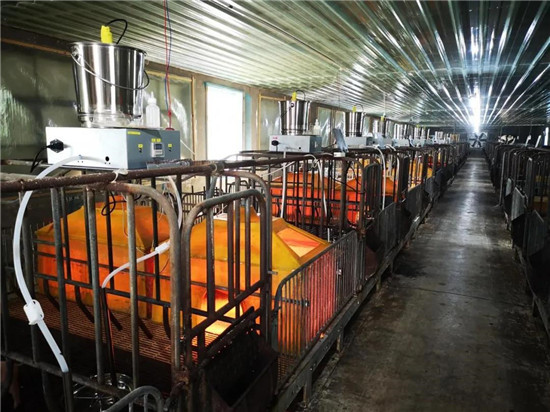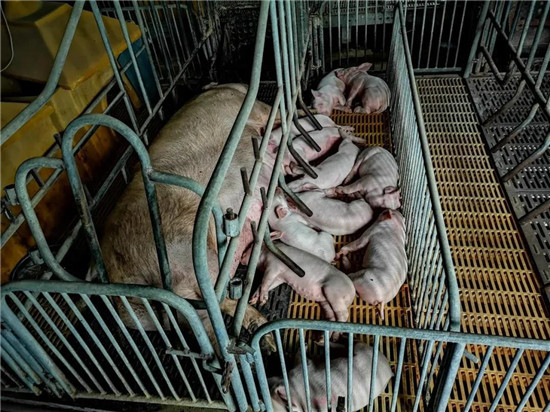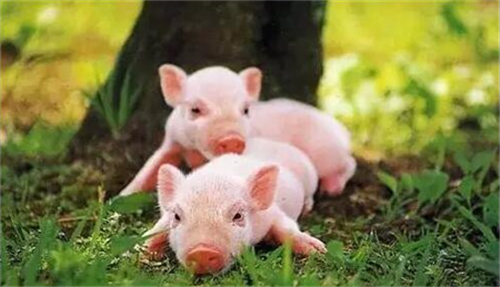Ten risk factors for prevention and control of colibacillosis in delivery room
Colibacillosis is the most easily infected disease in suckling piglets. At the same time, the rising mortality rate has also brought great losses to pig farms.
Pathogen is not the only cause of clinical manifestations of colibacillosis, management and environment are usually inducing factors, which not only affect the clinical symptoms, but also affect the severity and course of the disease.
Risk factors.
1. Pig herd structure: because the possibility of resistance transfer in reserve sows is much lower than in prolific sows, this unbalanced herd structure tends to increase the risk of disease when the number of reserve sows is 20% more than the number of litter sows.
two。 Nutrition during pregnancy:
Early pregnancy: (from 35 to 40 days of pregnancy) an increase in food intake in the first 3 days after conception contributes to the excretion of progesterone from the liver (highly related to embryo survival), but after this time, high feed intake has no effect on embryo survival. In addition, the amount of food intake during this period has nothing to do with colibacillosis, which causes diarrhea.
Second trimester: the goal is to maintain the physical condition of sows and improve the physical condition of some suboptimal sows. Special care should be given at this stage. Overfeeding can lead to breast hypertrophy.
Late pregnancy: there is some controversy at this stage: we believe that increased feed intake is needed only when sows are in significantly poor health. If overfed, we think it will cause breast hypertrophy.

3. Environmental factors: need to pay attention to the maintenance of two temperatures.
The temperature in the delivery room should be controlled at 22-24 ℃ according to the season. Thieves can cause diarrhea, so it should be avoided.
The temperature should be controlled at 36-38 ℃ in the first week after delivery. Adding paper or ultraviolet light bulbs during delivery can reduce the incidence of diarrhea.
4. Vaccination: back-up sows and sows need to be vaccinated against E. coli. Vaccination procedures must be consistent with the stress and signs of infection in pig farms.
5. Colostrum intake: at present, it is a very common phenomenon that the litter size of sows is greater than the number of functional nipples, so it is necessary to implement an effective colostrum intake program, not only to form the initial immune system, but also to meet the early postnatal energy needs of piglets.
6. Piglet transfer program: delivery batches should be maintained like airtight cabins. If some changes are needed, it is recommended to transfer sows and introduce foster sows instead of transferring piglets. Therefore, according to the fecundity of the pig farm and the number of underdeveloped piglets, space can be set aside in the delivery room to introduce weaned sows as foster sows.
7. Check the condition of the sow when the sow enters the delivery room: the sow in poor condition may cause diarrhea in the piglets.
8. Cleaning and disinfection of delivery room:
Wash all organic matter, empty and clean the pit.
Improve the effectiveness of washing by spraying detergents at low pressure.
Disinfect and disinfect the delivery room, and check the function and cleanliness of the material trough and drinking fountain.
It is necessary to keep the delivery room completely dry before the sow enters.
9. Staff training: for every corner of the pig farm, it is necessary to provide corresponding training for employees. Through the comprehensive and systematic training of all employees involved in the production process, we can provide them with a basic understanding of their work.
10. Water quality: water is the most important nutrient, and, in the delivery room, the microbial and chemical composition of water is very important for disease prevention. Therefore, at every stage of production, it is necessary to properly treat the water and ensure the supply of water. (source: Liu Kunying Love Pig Network)
Related
- On the eggshell is a badge full of pride. British Poultry Egg Market and Consumer observation
- British study: 72% of Britons are willing to buy native eggs raised by insects
- Guidelines for friendly egg production revised the increase of space in chicken sheds can not be forced to change feathers and lay eggs.
- Risk of delay in customs clearance Australia suspends lobster exports to China
- Pig semen-the Vector of virus Transmission (4)
- Pig semen-the Vector of virus Transmission (3)
- Five common causes of difficult control of classical swine fever in clinic and their countermeasures
- Foot-and-mouth disease is the most effective way to prevent it!
- PED is the number one killer of piglets and has to be guarded against in autumn and winter.
- What is "yellow fat pig"? Have you ever heard the pig collector talk about "yellow fat pig"?



